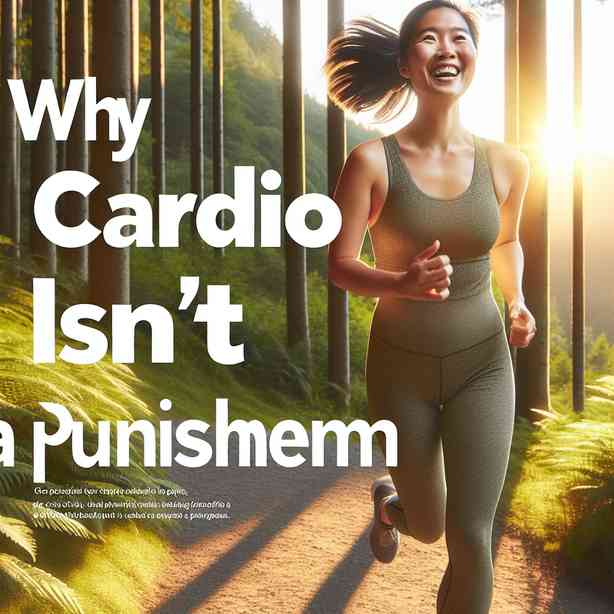
Cardio isn’t just a strenuous exercise; it is a tool that can bring joy, wellness, and community into our lives. Unfortunately, many people perceive cardio as a form of punishment, leading to negative associations that can discourage participation. However, it is vital to shift this mindset and understand the multifaceted benefits that cardio can provide, thus transforming the narrative around cardiovascular exercise.
First and foremost, one of the most prominent misconceptions about cardio is that it solely serves the purpose of burning calories. While it is true that cardiovascular exercise is effective in increasing expenditure of energy, its benefits extend well beyond weight management. Engaging in cardio enhances cardiovascular health, strengthens the heart, and improves blood circulation, which are essential for sustaining overall health. When we recognize cardio as an investment in our long-term vitality, it becomes easier to see it as a positive activity instead of a punishment.
Moreover, cardiovascular exercise is known for its remarkable impact on mental health. Studies have shown that regular participation in aerobic activities releases endorphins, often referred to as “feel-good hormones.” These chemicals create a sense of happiness and euphoria, which can reduce feelings of anxiety and depression. When cardio is perceived as a pathway to improved mental wellness, it can encourage individuals to engage in these activities with a positive mindset, thereby alleviating the notion of punishment.
It is also helpful to explore the various forms of cardio beyond traditional running or cycling. Cardio can include dancing, swimming, hiking, or even playing sports. By diversifying how we approach cardiovascular exercise, individuals can find an enjoyable way to engage in physical activity that doesn’t feel like a chore. This variety not only keeps workouts interesting but also helps to create a sense of excitement around exercise, promoting a more consistent and positive engagement with cardio.
Furthermore, integrating social elements into cardio activities can significantly enhance the experience. Group classes, local running clubs, or even casual walking groups allow individuals to engage in cardiovascular exercise within a supportive community. The camaraderie built through shared experiences can transform cardio into a social event rather than a solitary task, reinforcing its positive aspects. When we associate cardio with meaningful interactions and shared goals, it becomes less of a punishment and more of a fulfilling activity.
Encouraging self-compassion is another critical aspect in reframing our understanding of cardio. Many individuals may feel pressure to achieve a specific fitness level or to sustain a certain intensity throughout their workouts. However, it’s important to remember that every individual’s journey is distinctive. Establishing goals that focus on personal growth, rather than competition or comparison, allows for a more positive engagement with cardio. Celebrating small milestones, such as increasing stamina or improving mood, can help maintain motivation and foster a sense of accomplishment.
In addition to psychological factors, it’s crucial to acknowledge the physical transformations that cardio can cultivate. Enhanced endurance, resilience, and overall physical capacity can dramatically improve one’s quality of life. Being able to engage in everyday activities with ease is a significant benefit of regular cardiovascular exercise. This recognition shifts the narrative away from cardio being a punishment and toward viewing it as a rewarding form of self-care that enhances our daily experiences.
Nutrition also plays a pivotal role in enhancing the cardio experience. Consuming a balanced diet to support energy levels and recovery can make cardio feel more enjoyable and less arduous. Understanding the connection between what we eat and our physical performance can empower individuals to make lifestyle decisions that promote a positive relationship with cardio. When we fuel our bodies properly, we can approach cardiovascular workouts with renewed energy and enthusiasm.
Additionally, setting personal challenges can transform the cardio experience. This could range from committing to a certain number of workouts per week to participating in a fun run or a cycling event. These challenges allow individuals to track progress, celebrate accomplishments, and enjoy a sense of community with others who share similar goals. Personal challenges not only provide structure but also create opportunities for joy and achievement that can redefine how we view cardiovascular exercise.
Lastly, it is indispensable to listen to your body when it comes to cardio. Knowing when to push yourself and when to rest is crucial for maintaining a healthy and enjoyable relationship with exercise. Sometimes, taking a break or opting for a lighter workout can help prevent feelings of burnout and reinforce the idea that cardio should be enjoyable and fulfilling. Acknowledging your body’s needs creates a harmonious relationship with exercise, steering it away from being perceived as a punishment.
In conclusion, the mindset surrounding cardio can have a profound effect on how we approach and engage with exercise. By recognizing its myriad benefits—ranging from improved physical health to enhanced mental wellbeing—we can begin to redefine cardio as a joyful and empowering activity rather than a means of punishment. Incorporating variety, social interaction, self-compassion, proper nutrition, personal challenges, and body awareness can transform our relationship with cardiovascular exercise, making it a vital and enjoyable part of our lives. Embracing cardio as a celebration of movement and health allows us to cultivate a lasting, positive habit that benefits us not just physically but emotionally and socially as well. Ultimately, cardio is an invitation to nurture our bodies and minds on a journey toward overall wellness, one joyful step at a time.


